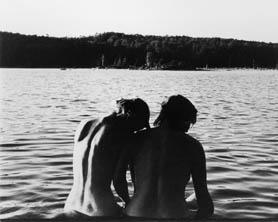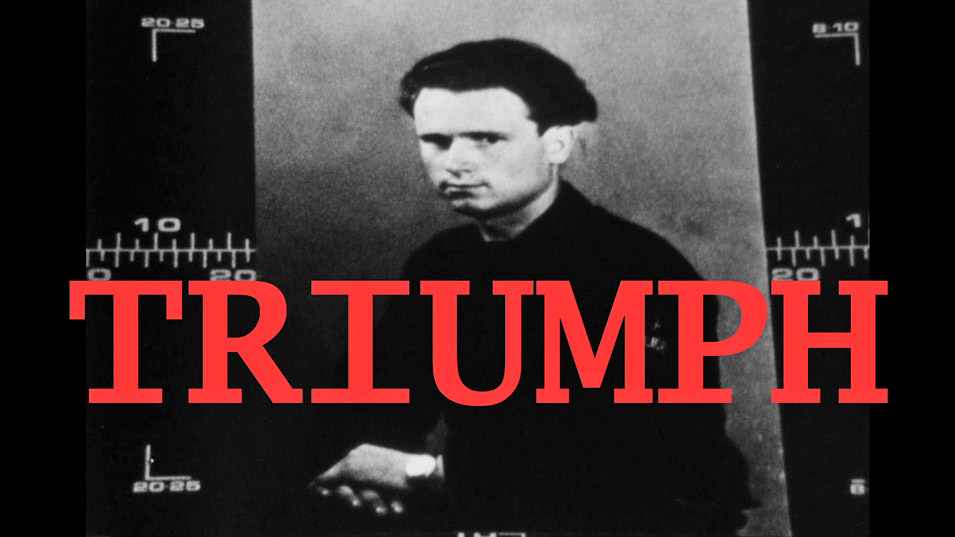Underground: The Funnel Experimental Film Co-op 1977-1988
Screened as part of “The Free Screen” at TIFF Cinematheque, Jan. 31, 2017 and in Ottawa by the Canadian Film Institute at IFCO on May 31, 2017.
Book launch for “Underground: The untold story of the Funnel film collective” by Mike Hoolboom
The best-kept secret of the Canadian film underground remains the Funnel, a muchly rumoured experimental film collective that remapped fringe practice in Toronto for a decade. 25 years after it folded its tents, the inner sanctums have remained shrouded in a haze of banishments and dark rumours, there have been almost no attempts to tell the story, no retrospective screenings or anniversary toasts.
For the past half dozen years I have been working on an oral history book about the Funnel. It tells the story of a Canadian fringe film collective that built its own movie theatres, re-versioned home movie equipment to produce avant-garde art and published its own articles of faith. The Funnel created a distinct economy based on volunteerism, a shared set of historical codes and aesthetic benchmarks derived from artists’ films, all fueled by a radically egalitarian decision-making process. Curiously or not, it was run by hippies who had turned into punks, all bound by a communal ethos.
The many voices in the book are a formal projection of the Funnel itself, a horizontal organization that tried to give weight to every member. While there were directors and programmers, individual members were encouraged to pipe up about everything from hoped-for guests to the state of the toilets. If the admittance fee was an inhuman amount of volunteer labour, the reward was having a say in every decision that mattered. More than once, faced with yet another crisis at the doorstep, the entire membership would be summoned for a meeting that no one imagined ducking.
Was the Funnel a necessary prelude, a final analog embrace before the digital flood tide, a tribal summons? Where had we been all those years anyway — the underground?
Underground: The Funnel Experimental Film Co-op 1977-1988
Ville – quelle ville? by Midi Onodera 4 minutes 1984 (digital file)
Made for the Funnel’s opening night in 1984, the first part of a trilogy that includes Made In Japan (1985) and The Dead Zone (1985). The city of Toronto had granted the Funnel a modest sum to help celebrate the city’s 150th birthday, which paid for a dozen rolls of film and processing. With typical smarts and ingenuity, the artist offers a city portrait miniature, carefully observed moments (a woman gets on a bicycle, another enters a fruit stand), then lays a precisely written voice-over and sax solo over it all. Here is a voice made for the cinema, intimate and ironic, a call to attention.
DP2 by Peter Dudar 16 minutes 2014 (digital file)
As Lily Eng’s characteristically virtuosic choreography propels her through the emptied corridors of the R.C. Water Harris Treatment Plant, Peter Dudar plays a Ukrainian survivor of WW2, delivered via talking head address in a darkened studio. He describes being pushed into a German forced labour camp, then a concentration camp, and finally a farm, before the war ends. He walks into allied territory after the war, a consummate survivor, besieged by all sides. His brother died in a massacre that no country is willing to take responsibility for. DP2 outlines the family divisions and generational agonies, the casual ruptures and catastrophes that war inevitably brings, a reminder of the ongoing cost of conflict.
The Iconography of Venus by Annette Mangaard 5 minutes 1987 (16mm)
A personalized herstory that is also a chronicle of looking. How do I look? What kinds of looking schools have told me how to receive a gaze, and could the cinema be an unfinishing school for those too certain of where women might be placed? Many of the film’s moments are subject to rephotography (the piano player, the boat rower, the glam couple exiting in their getaway car, the crowd gathered round the Mona Lisa). This is a twice-told tale, the pictures subject to re-looking and reappraisal. The operatic soundtrack written by the filmmaker is performed by Suzanne Palmer.

Eye of the Mask part 1 by Judith Doyle 27 minutes 1985 (16mm)
Shot during the revolutionary civil war in Nicaragua that brought the Sandinistas to power, Doyle’s sterling doc looks at a nomadic theatre group that brings the hard questions about culture and politics. “Is the revolutionary theatre popular, or does it impose ideas on people? Are they using a new method of education, or justifying the problems of today with the old ones?” The film’s carefully observed compositions give us time to see a society in transition, and the place of pictures in these new moments, where invention and recollection are the give and take of a new native-driven consensus. These are notes from the front line of an unlikely revolution, unlikely because it pushes against massive American support for the dictator Somoza and his ruling class pals; it is a fight against capitalism itself, as the theatre troupe makes clear. Here the most ordinary moments are extraordinary: two women waiting for a bus, a man walking down a street alone, children on a twilight swing. As the voice-over narrates: “This artisanship is a culture of resistance, simply because it survived.”
Canada Mini-Notes by Jim Anderson 15 minutes 1974 (16mm)
This much-travelled film is lifted from Jim’s episodic feature Gravity is Not Sad, But Glad (1975). To quote Clint Enns: fun formalism! It features a playful theme and variation presentation of flipbooks, and the collections that these coloured notepads contain. The movie opens with hand-drawn geography lessons, each frame appears on single pages of one flip book after another. We see the formation of the Great Lakes and the Rockies, the shifting location of Niagara Falls, the colonial incursions into what would become Canada. A series of objects appear, evidence of human settlement. Each page reveals another plastic fork, or a metal pull tab, or a match book, or a candle, lit and unlit. Sound enters late, with the introduction of a figure, blowing horns, then speaking, as if we were tracking the origins of language.




